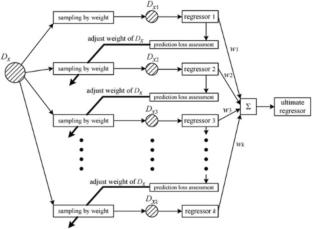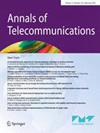RSSI预测和优化传输功率,提高LoRa通信性能
摘要
LoRa通信的优化对于提高物联网网络的效率和可靠性至关重要,特别是在具有挑战性的工业环境中。该方法旨在最大限度地提高LoRa通信性能,从而在复杂和严格的上下文中实现该技术的最佳使用。本工作的重点是使用人工智能模型来预测LoRa通信中的RSSI和优化传输功率。7种不同的模型,即决策树、神经网络、高斯过程、随机森林、支持向量机、梯度增强和AdaBoost,在准确性和时间效率方面进行了评估。模型使用外部数据进行训练,包括来自8个节点的RSSI和信噪比,以及温度、湿度、大气压力和降雨量等气象变量。R2为0.99112,效率为97.2%, and an RMSE of 0.0221, the artificial neural network is remarkably efficient. Despite requiring significantly more time for training than other models, it also stands out for having an extremely low prediction time of 0.5629 s. The accuracy of the Gaussian process model with Ardexponential kernel is favorable, but not as good as that of the neural network (RMSE 0.0233, MAE 0.0165, efficiency 95.72%, R\(^{2}\) 0.9902). However, the training period of this model is shorter (2229 s) than that of the neural network. The random forest model with 3000 trees provides satisfactory results (RMSE 0.0323, efficiency 89.92%,) with a modest training time (115 s) for an acceptable compromise between accuracy and efficiency. Finally, the decision trees model with MinLeafSize=4 improves accuracy while maintaining a low training time of 0.0810 s. In a second part, the paper explores the optimization of transmission power in LoRa communications, using the predicted RSSI and other parameters as inputs to a genetic algorithm. This algorithm aims to minimize transmission power by adjusting the spreading factor and bandwidth specific to each LoRa communication. The results demonstrated the effectiveness of the genetic algorithm, which rapidly converged on the optimum values for SF and BW in a brief runtime of 0.1211 s. This approach achieved significant gains in transmission power, reaching up to 7.49 mW for some transmissions.

Optimization of LoRa communications is of paramount importance in boosting the efficiency and reliability of IoT networks, particularly in challenging industrial environments. This approach aims to maximize LoRa communications performance, enabling optimal use of this technology in often complex and rigorous contexts. This work focuses on the use of artificial intelligence models to predict RSSI and optimization of transmission power in LoRa communications. Seven different models, namely decision trees, neural networks, Gaussian processes, random forests, SVM, gradient boosting, and AdaBoost, were evaluated in terms of accuracy and temporal efficiency. The models were trained on external data, including RSSI and SNR from eight nodes, as well as meteorological variables such as temperature, humidity, atmospheric pressure, and rainfall. With an R2 of 0.99112, a high efficiency of 97.2%, and an RMSE of 0.0221, the artificial neural network is remarkably efficient. Despite requiring significantly more time for training than other models, it also stands out for having an extremely low prediction time of 0.5629 s. The accuracy of the Gaussian process model with Ardexponential kernel is favorable, but not as good as that of the neural network (RMSE 0.0233, MAE 0.0165, efficiency 95.72%, R\(^{2}\) 0.9902). However, the training period of this model is shorter (2229 s) than that of the neural network. The random forest model with 3000 trees provides satisfactory results (RMSE 0.0323, efficiency 89.92%,) with a modest training time (115 s) for an acceptable compromise between accuracy and efficiency. Finally, the decision trees model with MinLeafSize=4 improves accuracy while maintaining a low training time of 0.0810 s. In a second part, the paper explores the optimization of transmission power in LoRa communications, using the predicted RSSI and other parameters as inputs to a genetic algorithm. This algorithm aims to minimize transmission power by adjusting the spreading factor and bandwidth specific to each LoRa communication. The results demonstrated the effectiveness of the genetic algorithm, which rapidly converged on the optimum values for SF and BW in a brief runtime of 0.1211 s. This approach achieved significant gains in transmission power, reaching up to 7.49 mW for some transmissions.

 求助内容:
求助内容: 应助结果提醒方式:
应助结果提醒方式:


